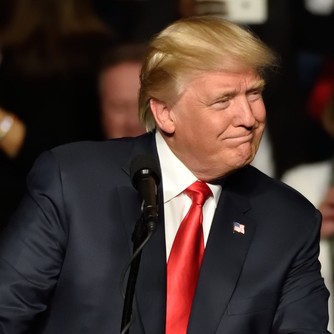Trump signs executive order requiring agencies to cut two regulations for every new one proposed

President Donald Trump. Evan El-Amin / Shutterstock, Inc.
President Donald Trump on Monday signed an executive order requiring executive departments and agencies to cut at least two regulations for each new one introduced.
The order sets an annual cap on the cost of new regulations, and requires that the cost of new regulations in fiscal 2017 be offset by the elimination of existing rules, Reuters and the National Law Review report.
The executive order does not apply to regulations regarding the military and national security, according to the Washington Post and Bloomberg Politics.
The order also does not apply to independent agencies, including agencies such as the Securities and Exchange Commission that created rules under the Dodd-Frank financial reform law, according to Reuters. Nor would it apply to rules mandated by laws.
The order states the two-for-one mandate is required “to the extent permitted by law” and the cost caps are required “unless prohibited by law.”
Under Trump’s order, the Office of Management and Budget will provide guidance on how to implement Trump’s directive. The guidance will address standards for defining costs and for determining what qualifies as new and offsetting regulations.
University of Texas at Austin law professor Tom McGarity told the Washington Post that the order is “extraordinary. That’s all I can say.”
“It is amazingly ham-handed,” McGarity added. “Because it applies to every regulation. It’s not limited to major regulations.”
McGarity said the Administrative Procedures Act gave Trump the power to issue such a directive, and he didn’t see much of a way to challenge the order.
But Ken Kimmell, president of the Union of Concerned Scientists, told the Washington Post that Trump’s order was “likely illegal.”
Kimmell said the order is “absurd, imposing a Sophie’s Choice on federal agencies. If, for example, the Environmental Protection Agency wants to issue a new rule to protect kids from mercury exposure, will it need to get rid of two other science-based rules, such as limiting lead in drinking water and cutting pollution from school buses?”
“Congress has not called upon EPA to choose between clean air and clean water,” Kimmell said, “and the president cannot do this by executive fiat.”



